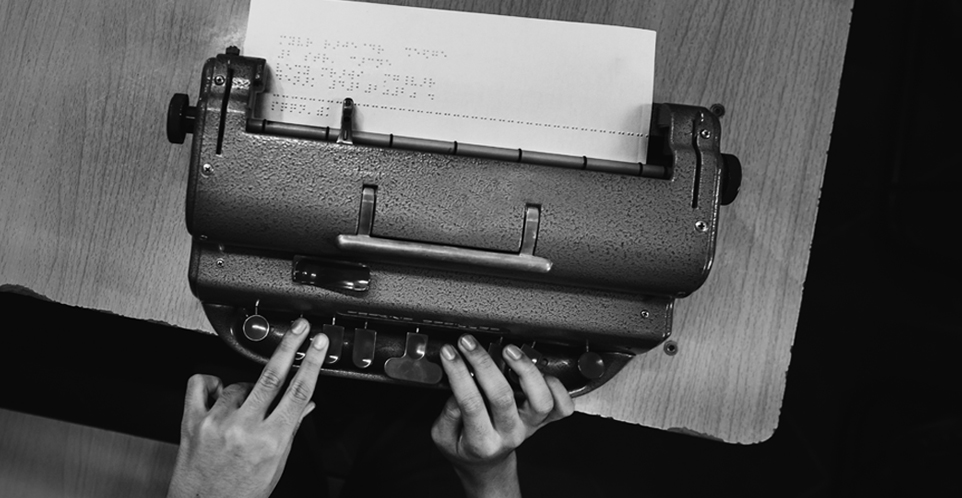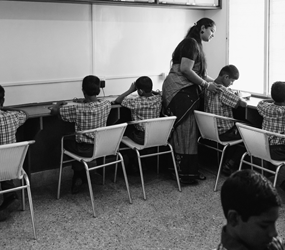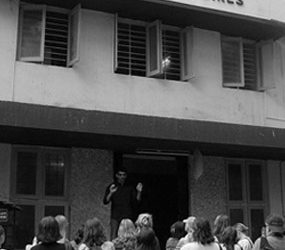Perkins Brailler
I will be starting this post by first giving a brief description about Braille and the various equipment used to write and read.
A version of Braille was invented by Charles Barbier. Barbier in the 1800s was in Napolean Bonaparte’s army and noticed that a number of soldiers in the army were shot when they used to use a lamp to read military orders in the dark. The enemy would spot the light and target. He then came up with the concept of reading in the dark with messages embossed on paper to save the lives form getting spotted at night.
Later, in the early 1800s, Louis Braille who lost his vision by injuring his eyes, used this concept by embossing on the Leather produced in his father’s factory. This was used for representing French letters through embossing 6 dots of 3 each in 2 two adjacent verticals on paper. The varied formations of the dots was made into Braille. Each country has subsequently formed its equivalent of Braille combinations for its alphabets. English for example – embossed in Braille an additional alphabet “w” which was never there in French.
Today there are a few devices in which students can write in Braille. For mass usage, these had to be simple and easily useable.
The most common form is a “Braille slate”. Slate comprises two flat platform, with a sheet of paper inserted between them. The lower platform has uniform-sized dotted protrusions with a series of the 6 Braille dots. On this, a paper is placed and clamped with the upper platform of the slate to hold it in a static position. A stylus is then used to form shapes of each of the pairs of 6 dots which form the Braille letters/ expressions.
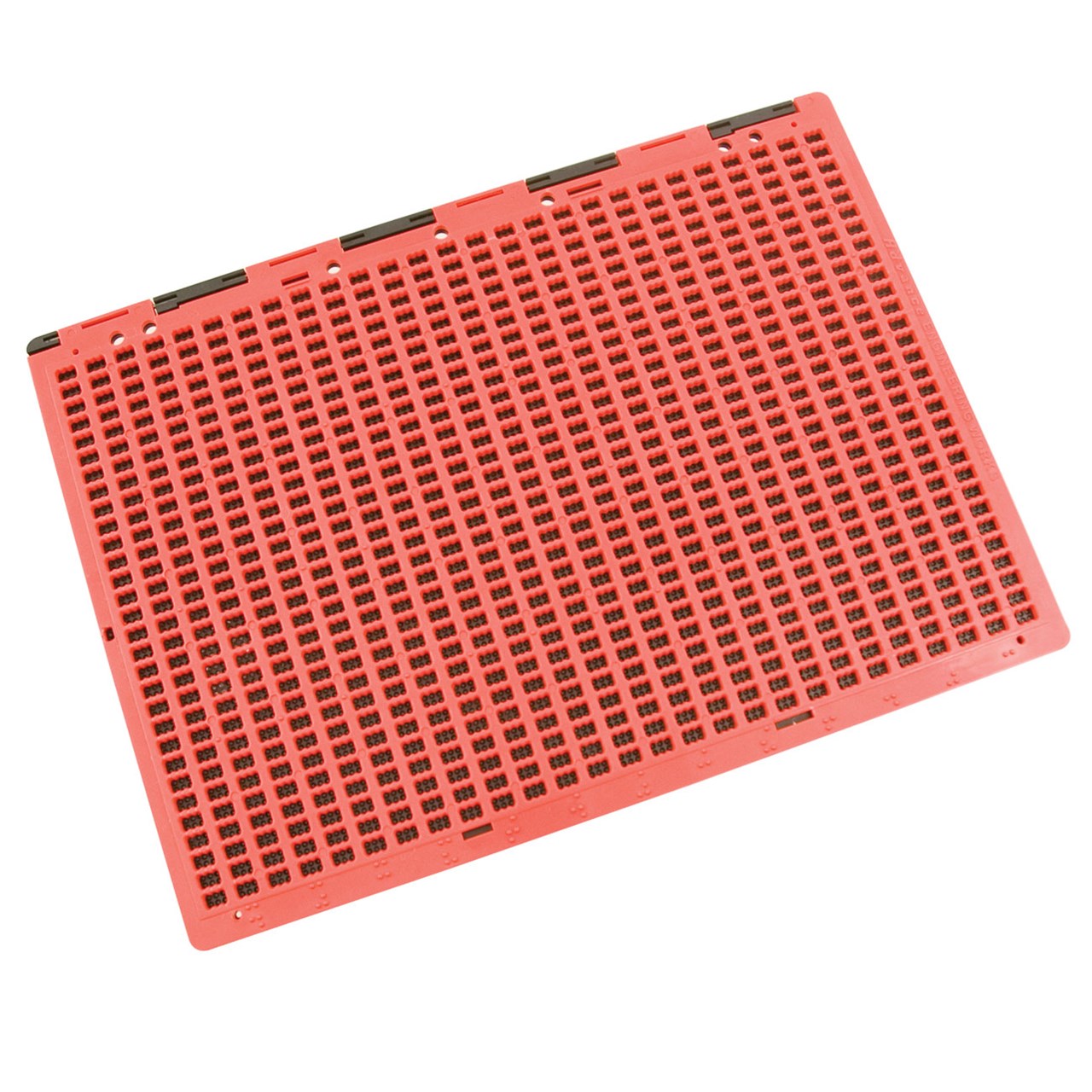
Although the slate is a beginner’s platform – the most popular amongst the blind all over the globe is the “Perkin’s Brailler”, invented by Frank Hall of the Perkin’s Blind School. It’s a typewriter-shaped instrument which has 6 letter keys, a space key, and alignment capability.
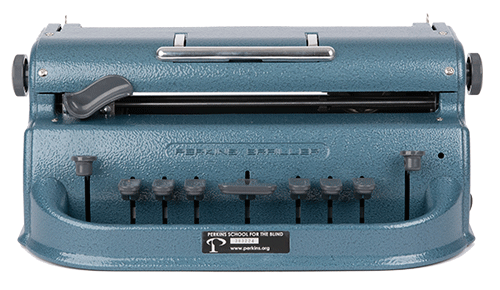
All forms of slates used prior to this invention were slow and cumbersome in usage. This made usage simple, quicker and sturdier.
Over the period of more than a century the Perkins Brailler has undergone a few modifications. But the overall sturdiness, its functionality and quality standards have been maintained.
The Perkins Brailler is easy to use. It’s a typewriter with a very light touch. The typewriter itself is quite strong and can take any amount of knocks. The paper that is fitted in it for embossing is inserted easily, plus the mechanism used to spacing it is very simple and easy to touch and sense. The embossing of dots is achieved by the pressing of the touch keys – each representing one of the 6 dots in the Braille system. The beauty of the Perkins Brailler lies in the simplicity and robustness of its design with attention to every minor details. For example, the spacing is controlled perfectly which helps erasing to in a pinpointed precision. Plus the paper is stuck and rolled up simply in the typewriter preventing it from filling when embossed. These features have made the Perkins Brailler reliable and easy to use, and it remains unsurpassed to this day.
In 2011, an advanced version of the Perkins Brailler was invented by David S Morgan and called it the “Smart Perkins Brailler”. This Brailler, like the regular Perkins Brailler, is also based on mechanical actions when unpowered. When powered it adds a digital display as well as a speech to text audio feedback.

The feedback from the users of the Perkins Brailler at The Poona School was also very positive. The feedback very clearly states that it is possibly the best invention which has simplified using braille ubiquitous. Although I must say that the time has also come for the School to experiment with the “Smart Perkins Brailler”.
Author: Yuvan Chugh
“It is very sturdy and can handle rough usage too.”
-Trupti
““I can now hope to finish my exam in time, thanks to the Brailler.”
-Suhas
Our goal is to support students by purchasing 5 Perkins Brailler. Many of these students are boarders due to the lack of educational programs for blind students in Maharashtra. These students are already at an educational disadvantage, and are at severe risk of falling further behind and not maintaining their skills. Donate now to help blind students access education.


